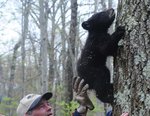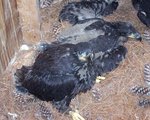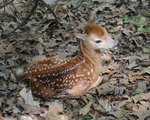 Narrowsburg
NarrowsburgLight Rain Fog/Mist, 43°
Wind: 8.1 mph
 Narrowsburg
NarrowsburgSpring is looked upon as the renewal of life; in the wild, most animals are breeding, and many species have young walking along with parents or in the nest, in the case of birds. Newly born or …
Stay informed about your community and support local independent journalism.
Subscribe to The River Reporter today. click here
This item is available in full to subscribers.
Please log in to continue |



Spring is looked upon as the renewal of life; in the wild, most animals are breeding, and many species have young walking along with parents or in the nest, in the case of birds. Newly born or hatched young are much more vulnerable than the adults, and nature typically provides some protection for these young.
Sometimes, due to weather, disturbance, or conflicts with other animals of the same or other species, these young may find themselves in a predicament of varying severity. However, some of these situations that may appear to be a real problem are instead normal behavior exhibited by young and their parents.
One example seen quite a bit this time of year is with deer and fawns. A female deer will give birth to one or more fawns; because they cannot walk right away, the female adult will stand away from the helpless fawns for a short time. They do this the avoid drawing the attention of potential predators to the fawns. In a short time, after the fawns have become strong enough to walk, the female returns and leads away her young. Sometimes, well-meaning people will try to “rescue” the fawn by taking it away and trying to take care of it. This just causes bigger problems, as it is hard to re-introduce a young one to its parent after it is removed, assuming there is accurate geographical information on where the fawn was found.
But because of the bouts of severe weather this spring, there have been some genuine cases of problems with orphaned wildlife or downed young birds, k eeping wildlife rehabilitators and state agencies busy. So what if you find such a youngster?
Small bird nestlings can usually be returned to their nest if accessible, but larger raptors can be hazardous to handle, and their nests can be high up in the tree. A call to the state game agency or a wildlife rehabilitator is in order. The same goes with some mammals. A cub may appear to be alone and helpless in the woods, but its parent may be not too far away. If you take it from the location, you may unwittingly orphan that young, making any re-introduction effort much harder.
If you have any questions at all, call your state wildlife agency or a wildlife rehabilitator. For PA, visit pawr.com; for New York, visit https://on.ny.gov/2x31GCv.
Comments
No comments on this item Please log in to comment by clicking here